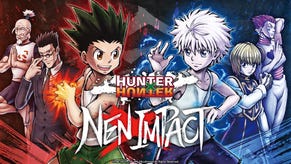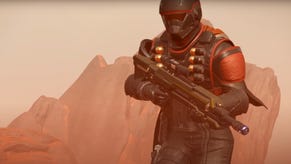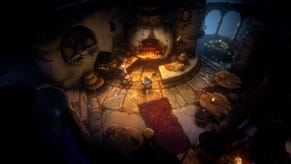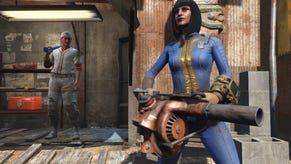Company of Heroes 2: blood on the Eastern Front
Company of Heroes 2 re-tells the largest war campaign in history. VG247's Dave Cook speaks with Relic to learn more about how this brutal conflict lends itself to a killer sequel.
Developers of war games are currently fixated on modern or future settings. That's fine, but it's nice to know that some studios are still exploring areas of past wars for inspiration. After all, the bloody battles waged on the Eastern Front during World War II are some of the most vicious known to man, yet they are rarely depicted in games.
It's a conflict that saw Germans and Russians locked in combat while facing a third, more unforgiving foe – the elements themselves. Soldiers froze to death, deep snow created death traps for infantry, and frozen bodies of water were potential tombs for vehicles passing overhead.
All of these dynamic elements require a solid suite of tech to achieve, and over the last few years, Company of Heroes 2 developer Relic has been busy creating the tools necessary to re-create the savage brutality of this harsh battlefield.
Relic has achieved that goal wonderfully, as players must contend with human enemies, resource management, tactics and environmental hardships simultaneously. It adds a new tactical layer to proceedings, and is sure to give strategy fans a real kick when the game launches in 2013.
To learn more about the game's setting new features and inspiration behind the campaign's key battles, VG247 spoke with Relic's principal designer Quinn Duffy.
VG247: What was it about the Eastern Front conflict that appealed to you as the basis for Company of Heroes 2?
Quinn Duffy: Well a big part of that was historical interests. It's the biggest conflict of the biggest war in human history, and it felt like we were missing the biggest part of the story of World War II if we didn't do it. So we're paying service to one of the truths of that war.
The involvement, the scale, the scope and intensity of the conflict on the Eastern Front gives players this epic, searing backdrop, and we chucked a lot of new gameplay into that setting. We also ramped up the intensity and brutality, so that's where we ended up with in Company of Heroes 2.
Because it is such a big conflict, you must have really worked hard to nail the historical accuracy of the campaigns and key battles?
We did a tremendous amount of research, and I recently sent a reading list to the PR guys who were interesting in what we'd been researching. I think we've read as a team over the last few years something like 30 books on the matter.
”Though all that research you’ll find one little anecdote – a couple of lines in a story – or an observation that was made, and you put a sticky note on that, which then becomes inspiration for a whole gameplay system.”
Those are Russian sources, Western sources, and over the last number of years there has been some great work coming out of the Russian archives. They opened them up for a while, and Western researchers were finally able to get in there and look at the Russian story from a Western perspective.
We were really inspired by Antony Beaver's work – he wrote Stalingrad and the Battle for Berlin – and the work of Russian war correspondents like Vasily Grossman, to get the touch of the common soldier.
What you find is that though all that research you'll find one little anecdote - a couple of lines in a story - or an observation that was made, and you put a sticky note on that, which then becomes inspiration for a whole gameplay system.
It's been a whole lot of effort and work to get the tone right, and you sort of see something and you think, 'that feels tonal, and something we can deliver in the game.'
The original Company of Heroes launched in 2006. How come it's taken so long for Relic to return to the series?
Yup, it was September 12th 2006, and I think one of the big elements was that we couldn't do what we wanted to. We couldn't deliver the game we wanted to in the old engine, and obviously we were doing things in between.
Relic isn't a big company, we don't have a huge team, so we had people working on Company of Heroes online, on Space Marine, and on the Dawn of War series. So it's kind of a confluence of team, technology and just a desire to see what was next in the franchise, and where we could take it.
You've had a lot of time to develop tech, and you mentioned that your research gave rise to many new mechanics – such as the possibility that soldiers can freeze to death. Can you share a few of those new elements with us today?
We had a big focus, when we started development, on increasing the mind-share in the tactical gameplay. We didn't want to overwhelm players with lots of stuff, as we wanted to maintain the core gameplay of the original Company of Heroes.
So we looked at features that had a real benefit to tactical play, such as vaulting soliders. Troops can now vault over fences, rather than having to march slowly around them. It feels like a small change, but its impact on the tactical play is really pronounced.
We added the new TrueSight system which we're really excited about. When you play it you can see how the line of sight of soldiers is blocked by buildings, trees, hedges, tall walls and so on. All of a sudden tactics like flanking and ambushing become viable.
That's because you can't see what they can't see, which creates tension and a need to do reconnaissance. Like, you can't send tanks wandering blindly up a mountain unsupported.
”We had a great base with the original game, and there was very little that we took out. We just wanted to add extra value to the tactical play that our players already love. It is a game that where we’re trying to provide a feeling of intensity.”
No tank rush?
No tank rush [laughs]. We've added a whole load of mechanics around weather as well. The Eastern Front was fought in extremely cold temperatures in some cases, and we talk about 'General Winter' – this notion of the elements being this neutral third party on the battlefield that players have to contend with.
So we've also got deep snow that encumbers infantry, ice that can break under vehicles, and that all refreezes over time so the map becomes dynamic. We've got cold temperatures, meaning that troops can suffer from exposure, contract hypothermia and actually die.
Part of that is to generate decisions and consequence to get players thinking like, 'I have to send a squad over to capture that point. But it's long distance and some of them are going to die.' It gives them a sense of consequence, and that can be really compelling to see those choices play out.
This really is a wide range of new features, and with any good strategy sequel, developers need to be aware of changing the formula too much. What fundamentals did you absolutely have to keep from the original to satisfy your fan base?
We had a great base with the original game, and there was very little that we took out. We just wanted to add extra value to the tactical play that our players already love. It is a game where we're trying to provide a feeling of intensity.
It's front line combat, and it gives players the opportunity to use real tactics – flanking, throwing grenades at the right time, suppression and cover. We reward players who are using those things, because we want to ensure that smart players feel gratified. It's intelligent play, not a mechanical skill, and it presents theoretical challenges.
As deep and as tactical as Company of Heroes 2 is, do you think it's time to take the game on the road and into the tournament circuit?
I would love to see that. I would, because it exposes the game to a lot of players and people. I love the way it looks, I think it presents beautifully. When we started we had a creative vision statement for this, and it focused on the idea of a 'session to session' game.
This means that every game tells a personal story, every battle tells a story, and I think that comes out when you watch the game. There's an element of randomness, but I think that's part of the narrative of every single battle, and that's what makes it really compelling.
Like those small, personal victories when a player has a comeback and such?
”There is a lot of variety in anecdotes and accounts that we can sort of weave into the campaign. We have an interesting plot arc that we’re trying to deliver – there’s no spoilers as it’s historical – but the Russians almost lost.”
Exactly. It came down to the fact that when we'd play a game of Company of Heroes – win or lose – we'd talk about all of the cool stuff that happened, and we still do. Like once it's over someone would be like, 'oh did you see what hat guy did there?', and so on.
I mean, I still remember to this day a match I played where, I had a sniper in a building, and my opponent had a tank. He fired at me, blew up the front of the building and blew my sniper out of the back of the building. That was just physics happening, but that was a story, like this last ditch attempt by my sniper that was like something out of Saving Private Ryan. That's what we wanted in Company of Heroes 2.
Those stories happen often in multiplayer. What's your approach to competitive play this time?
Well, we're going to talk about that later, but it is critical to our success, and our long term success, so we're deeply aware of the desires of our community, as well as our own internal aspirations, so yeah.
There are those personal stories, but is making something like that possible a challenge when developing a game rooted in real-world history and fact?
You need variety. The nice thing about real-world inspirations is that there is a lot of variety in anecdotes and accounts that we can sort of weave into the campaign. We have an interesting plot arc that we're trying to deliver – there's no spoilers as it's historical – but the Russians almost lost.
Between 1941-42 they were desperate, and so we need to deliver that feeling to the player, so we need to really deliver that feeling of them coming back from the brink. and pushing one of the most fearsome war machines of all time back to their capital of Berlin. That automatically lends itself to a compelling mix of content.






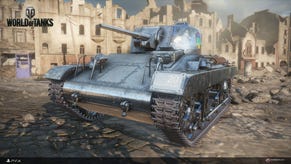
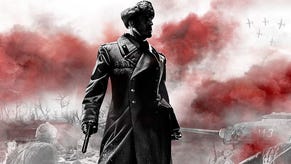
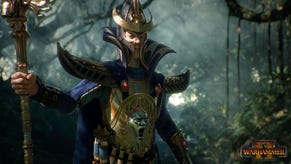
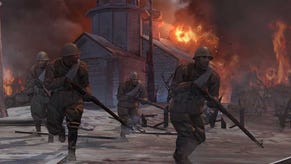
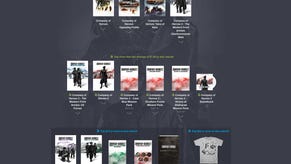
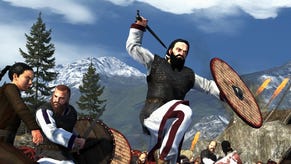

.png?width=291&height=164&fit=crop&quality=80&format=jpg&auto=webp)


